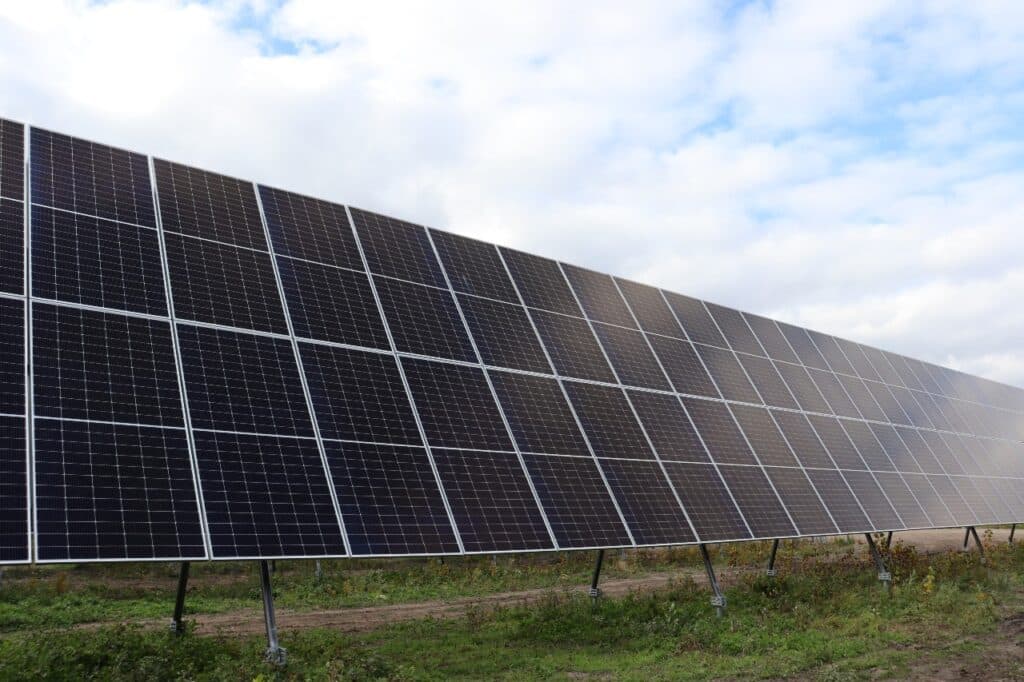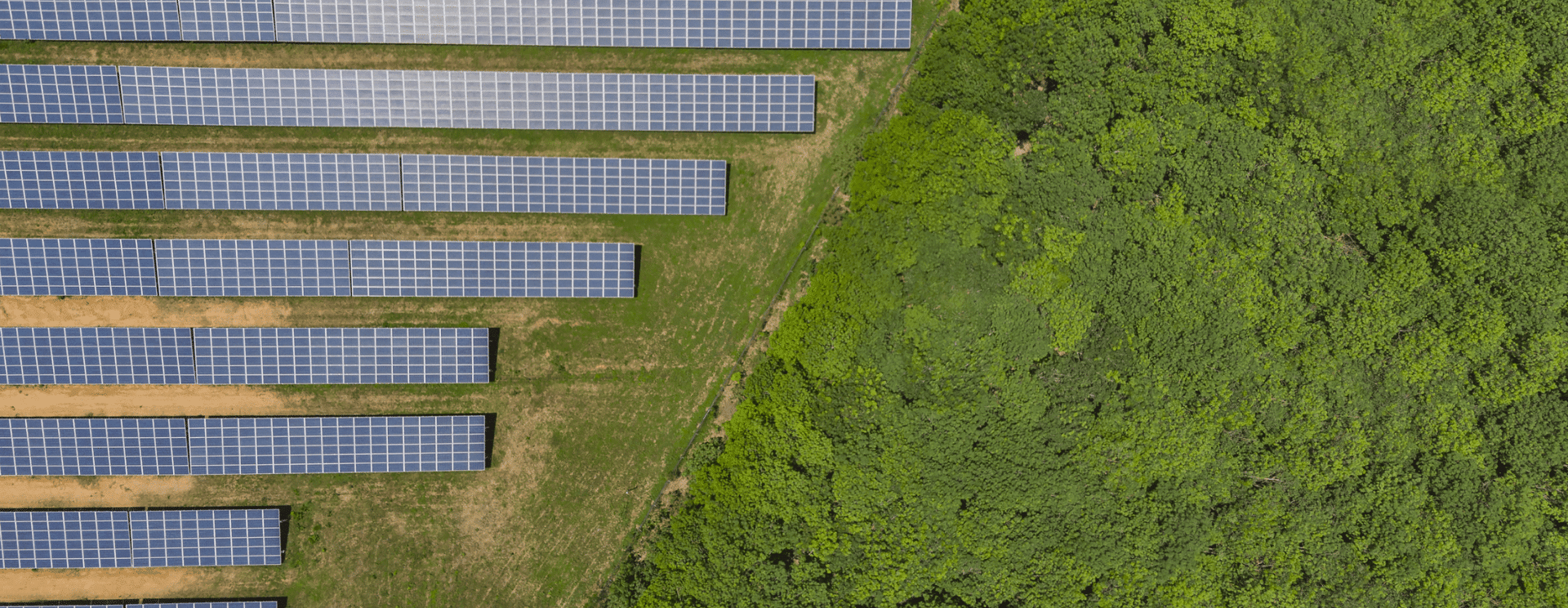5 Solar Trends We’re Watching in 2022 and 2023

The solar industry is growing by leaps and bounds, leaving many to wonder what the next phase of growth might look like and when it could arrive.
President Joe Biden has expressed the need for more renewable energy to meet the country’s ambitious environmental plans. The ultimate goal is to move to a completely decarbonized energy sector by 2050, but the United States will need a massive boost from its sustainable energy producers like wind, hydro, and solar power.
So what exactly does the future look like for solar? We’ve highlighted the five biggest solar power trends we think will influence the rest of this year and into 2023, and it’s a mixed bag. Some of what we’re seeing is incredibly encouraging, while other aspects give us some reason for short-term concern.
From the supply chain to overseas tariffs, these are the five biggest trends we’re watching this year.
The Supply Chain is Dictating Solar Costs
Unfortunately, the world has not recovered from the COVID-19 pandemic nearly as quickly as we had hoped for.
China’s on-again-off-again lockdowns have caused starts and stops in many manufacturing supply chains, resulting in lower availability of goods. Labor issues in the U.S. mean there aren’t enough dock workers and truck drivers to move raw and finished materials from ports, creating additional supply chain bottlenecks.
The lack of manufacturing production combined with less labor means that are fewer products available, leaving companies and utilities scrambling to source everything from solar panels and batteries to copper wire. These unintended shortages and delays have put the brakes on some utility solar projects, with some utility scale solar projects facing delays ranging from a couple months to next year.
According to the SEIA, solar prices were up 18% in 2021, though the spike can’t solely be attributed to a shaky supply chain (more on this topic later). The organization went on to say that about one-third of 2021’s Q4 capacity was delayed by a quarter, while about 13% of capacity slated for this year has been pushed back at least a year, or cancelled entirely.
The supply chain’s struggles are now becoming the entire industry’s problems. Short-term solar forecasts are down by nearly 20%, and reports suggest the industry could grow about 25% less than expected this year.
It’s not all bad news. Even with the pandemic, utility scale solar power costs dropped going into 2021, falling by about 12%. Short-term spikes in the cost of materials, including those used to make the panels, threaten to erase those cost savings, though relief seems to be on the way from the Biden administration.
The Solar Industry Is Dealing with Tariffs Galore
For several years, China has found itself the subject of anti-dumping regulations from the U.S. Simply put, dumping is what happens when a company offloads its product in another country for much cheaper than they would in their home country. According to the U.S., companies in China has been selling their solar technologies at a very low cost, making it harder for companies domestically to compete.
To fix the issue, the U.S. assigned tariffs to Chinese and Taiwanese solar panels in 2014, increasing prices by 50%. Chinese companies, though, may have used a loophole to avoid tariffs and still get their products into the U.S. by establishing companies in other countries like Malaysia, Thailand, Vietnam, and Cambodia and sending products to the U.S. tariff-free.
Today, more than 80% of the most popular solar modules come from those four countries. That means most of the panels used on utility sites in the U.S. are primarily coming from Asia, and most likely from a China-based company. In 2018, then President Trump instituted tariffs to increase the cost of manufactured products coming in from those countries.
Most recently, the U.S. Department of Commerce began looking into solar cell imports from Malaysia, Thailand, Vietnam, and Cambodia to assess whether dumping had occurred, but in early June, President Biden issued an announcement that it wouldn’t impose new tariffs on solar imports for two years. The move is expected to help get utility solar projects across the country back on track as soon as possible.
Long-term Solar Costs Will Decrease
Solar is already among the cheapest energy producers available today, but as production costs continue to drop and panel prices become cheaper and more efficient, it could open up more avenues to expand solar systems across the country.
As recently as 2020, electricity produced by utility-scale solar cost about 5 cents per kWh. The cost dropped to 3.5 cents per kWh in the most optimized regions. The hope is that solar panels become more efficient, while the costs of modules and BOS systems keep dropping.
So far the trend has held up. From 2010-2020, the cost of a utility PV solar system dropped by more than 80%. Despite a short-term increase in prices due to the pandemic, supply chain issues, and tariff concerns, overall trends show on-site project costs continuing to fall as more efficiencies are found.
For its part, Sun-Pull Wire is continuously working to revolutionize how PV wire is installed on utility scale systems. Sun-Pull’s cable solution, for example, cuts down on overall labor costs and project time by allowing a team of 3 to 4 people to install 1mW of string PV wire per day. Compared to single wire pulls, Sun-Pull’s PV wire can cut installation times by nearly 80%.
Faster installation times means more work gets done faster, increasing overall productivity of on-site teams, which helps companies address labor shortages or take on more projects with the labor they have.
Labor Shortages Are a Threat
Like many industries, solar energy is also facing a worker shortage.
Projections for the solar industry are positive, with estimates suggesting 1.5 million people could be employed by 2035, but in 2020 the industry only clocked about 231,000 workers – less than before the pandemic. To meet the Biden administration’s aggressive clean energy goals, it’s estimated that solar companies will need to employ about 900,000 workers.
With that said, productivity was still up and the hope is that the industry will continue its rapid ascent as more companies come online. As more projects are completed and adding power to the grid, SEIA believes annual growth will stay strong, but is somewhat dependent on the supply chain. Despite a shaky supply chain, the group says there is a lot of demand for solar and it will remain popular in the coming years.
The U.S. Bureau of Labor Statistics (BLS) agrees. As the country moves away from traditional fossil fuels for energy, the agency says solar, wind, and other renewables will need to step up to fill the gap.
The industry is also moving quickly to meet anticipated demand. Companies like Sun-Pull are solar innovators, finding ways to create cost savings for solar workers and energy providers. Sun-Pull’s bundled cable solutions allow even inexperienced workers to move more quickly and install PV wire to panels much faster than traditional single-pull methods.
Faster set-ups mean fewer people are needed on the job site, saving time, money, and manpower along the course of each utility-scale PV wire project.
Better PV Modules and Outputs Are Coming
In 2021, utility-scale solar produced nearly 114 million kWh, reflecting nearly 30% growth over the previous year. We expect outputs to keep increasing as more projects are added to the grid.
This coincides with other advancements in solar technology meant to increase energy production and efficiency. So far, the highest efficiency a solar panel has recorded is 47%, though most solar panels on the market today hover in the 20s. However, multijunction solar cells tend to perform better than other types.
Increasing efficiency is an important aspect of reaching our energy goals and there are several ways to make it happen. This can be done in a few different ways:
- Better thermal management – This will help solar panels perform better in colder environments.
- Minimize reflection – This requires non-reflective colors and coatings or using a textured surface to keep prevent solar rays from bouncing. More captured light means more efficiency.
- Reducing recombination – Recombination occurs when electrons return to their regular valence band. Companies can reduce recombination by cutting down panel impurities and other defects.
Where Does Solar Go from Here?
The goal is for solar energy to eventually replace traditional power plants. While it’s certainly within reach, the industry has some catching up to do.
Solar PV energy is here to stay. Like wind, the Sun is an ultimately renewable resource that has the potential to create an incredible amount of electricity, especially in areas where the sun shines consistently. It also stands to benefit from continued enhancements, making panels and systems more reliable, efficient, and longer lasting.
Recent actions, including a moratorium on new tariffs, will go a long way toward making life a bit easier for solar companies. With fewer roadblocks and a slowly improving supply chain, the entire solar industry is poised for massive growth in the coming years.
We’re excited for the future and can’t wait to be a part of the solar revolution!


